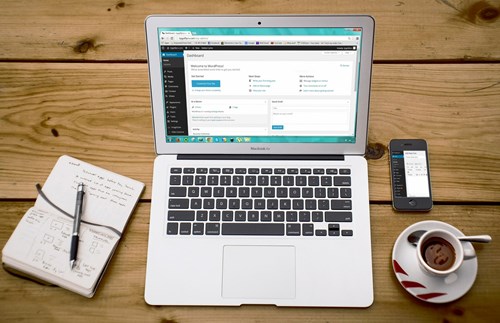Social Media
How to create a social media report template
Jun 30, 2020

Social Media
So, you’re acing all your social media channels, boosting your online presence, sharing engaging content, and interacting with your audience.
Wouldn’t it be great if there was a way to show your client or boss that all your hard work is paying off? Well, this is where social media report templates come in.
Easily showcase all your work by creating social media report templates. This gives your client a quick and easy way to track your progress and gain a quick overview of the social media strategy.
So, you’re acing all your social media channels, boosting your online presence, sharing engaging content, and interacting with your audience.
Wouldn’t it be great if there was a way to show your client or boss that all your hard work is paying off? Well, this is where social media report templates come in.
Easily showcase all your work by creating social media report templates. This gives your client a quick and easy way to track your progress and gain a quick overview of the social media strategy.
Curious to find out more about social media report templates? Then keep reading to learn how you can use these to your advantage.
What exactly is a social media report template?
A social media report template offers you a way to display your social media metrics and progress in one easy-to-read report.
It’s no wonder that over 75% of marketers use reporting to show how revenue is being impacted by campaigns.
So, as a marketer explaining your social media progress to your client is crucial and can easily be done through social media reporting templates.
Why use a template?
Using a template is a quick and easy way to create a detailed social media report without spending hours manually analysing huge data sets.
Make your life easier
Using a social media report template makes creating reports easier. You don’t have to spend much time deciding on what to include or how the design should be as this is usually already done for you.
You also reduce the risk of accidentally missing out data on your report. If every month, you include data on web visitors, your monthly social media report template will provide a framework for this and remind you to insert these numbers, resulting in a professional monthly social media report template.
Find yourself manually creating monthly social media reports? Then check out our guide on creating automatic reports.
Consistency is key
A social media report template is a good way to create a consistent report. Every week, your report will look the same and be familiar to the reader.
Let’s say you deliver reports every week on the same metrics. It makes sense to use the same social media report template each week to improve the readability of the report.
Perhaps you always have your data on Facebook engagement at the end of the report. If you change this layout, your colleagues may be searching for this data, since it’s not in its usual place.
Using the same or similar social media report template allows you to keep the format and layout consistent, making your report user-friendly and easy to navigate.
5 simple tips on creating awesome social media report templates
Follow our simple tips to create a professional social media report template. Keep your reader interested and make your reports engaging.
1. The most important points first
This may seem like an obvious tip, but sometimes you can get wrapped up in long and complex data or analysis. So, place your most important KPIs or points at the beginning of your social media report template.
By doing this, you will open your report with the most significant statements when your reader’s engagement is at its highest.
Once you have stated your key points, you can afterwards go into more detail and introduce your less significant information.
2. Get to the point
Exclude any irrelevant data in your social media reporting templates that do not contribute to your goal or target.
If there are lots of random charts or data sets that have nothing to do with the case in point, then your reader maybe gets confused and mixed up.
Not only does this take up valuable space in your social media reporting templates, but the layout will be messy, and the overall readability will not be great. So, keep it simple and to the point.
3. Utilise your data
After you have made your points, back up your statements or key takeaways. Justify your reasons and opinions with cold, hard facts.
Displaying the data as proof shows that you have done your research and are making solid arguments based off of solid data.
4. Explain your data
You should also use the numbers to tell a story or explain the reason why the numbers are as they are. For instance, maybe you have a spike in web visitors due to a celebrity mentioning your product/service.
Don’t just show the numbers without explaining this amazing opportunity. Clarify the numbers to help your reader gain a deeper understanding.
5. Ready, set, action!
Great social media reporting templates have a section on what to expect in the future. A few points on what can be done going forward.
This could be small steps towards achieving the business’s goal, or ways to improve on the data sets set in your social media reporting templates.
Whatever the case, state actionable steps that will give the reader a base to go off from. This will show them simple actions to take to achieve success. Simple!
Alternatives to making social media report templates
Social media report templates are great, but there are other ways to communicate the progress of the social media strategy. Check out our simple ideas that do not require a formal set up or lengthy meeting.
Get creative
A fun and creative way to update your teammates or clients on the status of the social media strategy is to design some quick infographics.
90% of information that is sent to our brain is visual, making infographics a great choice for communicating both to internal colleagues and to customers.
These could be quick facts about the performance of your latest Facebook campaign or perhaps a quick update on engagement rates.
You could send these to your clients or teammates or display them around your workspace as a small reminder of what you have achieved. This is a quick and fun way to inform and motivate your team!
Check out Canva for a great tool for creating fun infographics.
Stand-up meetings
A super easy alternative to using social media reporting templates is to schedule a regular stand-up meeting with your teammates or clients.
According to a study done by the University of Missouri, stand-up meetings are 3 times quicker than sit down meetings and result in the same quality of solutions.
These quick stand-up meetings do not take up much time and can be a great way to quickly communicate your key points to your teammates without organising the logistics of a formal meeting.
Email updates
Another simple idea to update your colleagues or clients on the performance on social media is to send quick email updates rather than sending social media reporting templates.
You can quickly send an email with a few of the key points taken from your social media report template.
Send this email to those who are involved but also to those who are not. Quick email updates are a simple way to update those on the outside.
Recipients can find out all the main details without the commitment of attending a meeting or reading a full-length social media report.
Read this article on writing the perfect email update from Inc. Magazine.
How to create a social media report template
Creating social media reporting templates are effortless with Agency360. In one easy-to-navigate platform, you can easily access the data and insight and create a social media report.
Start by logging into your client’s dashboard. Then click reports and then generate report and you will see all the metrics that you can include in your social media report templates.
Along the top of the page, choose your desired application for your social media report template.
Next, you can easily select whichever metrics you want to measure. Since this concerns social media only, simply click Facebook and Instagram. You will also be able to pick metrics within these categories.
Do you also want to create an SEO ranking report for your client? Find our straightforward guide here.
If you don’t see the metric you want to include in your report, then click select metrics in the top left corner of the screen.
Here, you will be able to pick which metrics to display on this page for your social media report template. This can also include our innovative smart tracking and goal metrics.
If you want to include any other metrics like web analytics, simply click to add this to the report.
At the bottom of the screen, you can also select the time period you would like to measure. Click the drop-down menu and choose the desired period.
After, click generate report and your report will be shown and downloaded automatically. Easy, right?
Use this same method to create report templates for other metrics like web analytics or customisable client reports.
Do you want to try out Agency360 without any obligation? Then try our free 14-day trial here.








